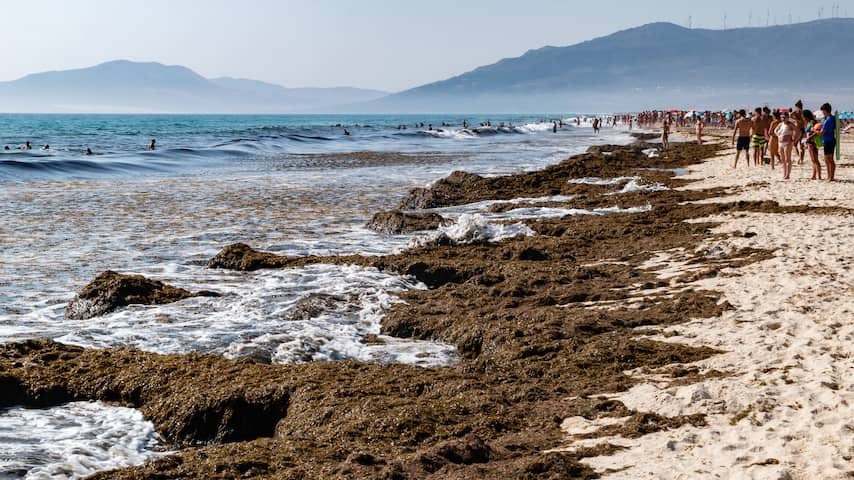
Thousands of tons of Asian seaweed have washed up on Spanish beaches in recent months. The algae pose a major threat to biodiversity. Local authorities are therefore speaking of an environmental disaster.
It concerns the Rugulopteryx okamurae, an algae species that normally occurs in Southeast Asia. Since May, the Spanish municipality of Cádiz has removed 1,200 tons of seaweed from a city beach, writes The Guardian. The local authorities speak of an environmental disaster.
The algae have displaced other native seaweeds. This makes the algae species a threat to biodiversity in the area. In addition, the seaweeds hinder local fisheries and surfers have more difficulty doing their thing.
The seaweed plague is not new. Spain has been struggling with the growth of enormous amounts of algae for years. The algae may come along in tanks on ships that pass through the Suez Canal. If the ships then discharge their tanks into the Mediterranean Sea, the algae drift to Spain with a westerly wind.
The current size of the plague is very difficult to control. The algae attach themselves to rocks and other surfaces and also float around freely. According to the authorities, the seaweed hardly responds to poison.
The seaweed is currently being dumped in landfills. One company makes drink packaging, fuel or fertilizer from it. The use of algae as biomass to generate energy is also being considered. That could be part of the solution, because dozens of kilos of seaweed continue to wash ashore every day.